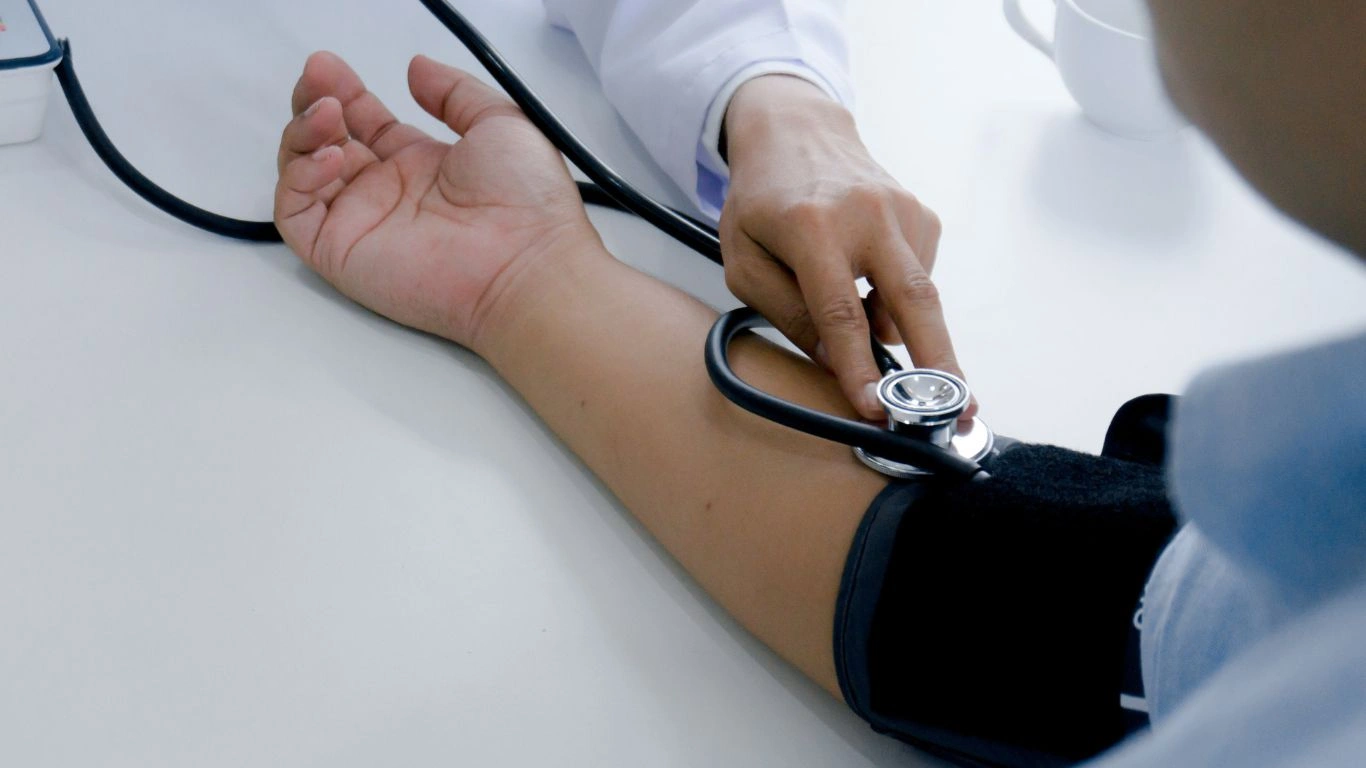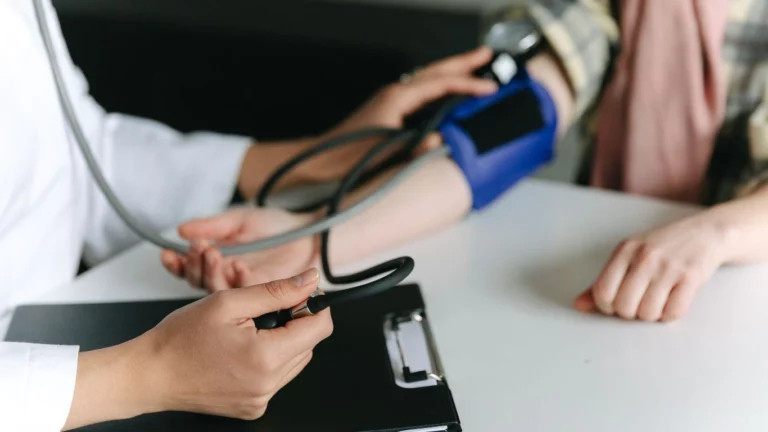Can Peanut Butter Raise Blood Pressure? What You Need to Know
Can peanut butter raise blood pressure? This is one of those questions I get more often than you’d think—usually from patients staring nervously at their peanut butter jar while trying to do everything right for their heart health. As an internal medicine physician with a special focus on hypertension management, I’ve spent years helping folks navigate dietary myths and make realistic lifestyle choices. And when it comes to peanut butter, the answer isn’t as simple as a yes or no—like most things in medicine, it depends.
Peanut Butter and Blood Pressure: Let’s Clear the Air

First things first, peanut butter isn’t automatically the villain in your blood pressure story. But it’s also not entirely off the hook either. The real trick is understanding what’s in your peanut butter, how much you’re eating, and what your overall diet and lifestyle look like.
What’s Actually in Peanut Butter?
Let’s break it down. Peanut butter—at its most basic—is just ground peanuts. That means it’s naturally rich in healthy fats, protein, fiber, and several vitamins and minerals. Here’s a peek at what you’ll find in a two-tablespoon serving of natural peanut butter:
- Calories: About 190–200
- Fat: 16g (mostly unsaturated fats)
- Protein: 7–8g
- Sodium: Varies—can be very low in natural versions, but quite high in commercial brands
So where does the confusion come in? It’s all in the extras. Many popular brands of peanut butter are loaded with added salt, sugar, and hydrogenated oils, which can absolutely influence your blood pressure—especially if you’re eating it regularly or not checking the label.
My Clinical Experience: Salt Is the Sneaky Culprit
Over the years, I’ve had patients who genuinely believed they were eating healthy just because they switched from cookies to peanut butter as a snack. But when we dug into their diet logs, it turned out they were eating two or more servings of high-sodium peanut butter daily—and wondering why their numbers wouldn’t budge.
One patient, in particular, stands out. She was diligent—measured her portions, avoided processed meats, and worked out three times a week. But her blood pressure kept creeping into the 140s. Turns out, the “healthy” peanut butter she used on her morning toast had 150mg of sodium per tablespoon. Multiply that by her two-tablespoon serving, and you’ve got 300mg of sodium before breakfast. Over time, that adds up—especially for those of us trying to stay under 1500–2000mg per day.
Can Peanut Butter Raise Blood Pressure?
Yes, it can—but not because of the peanuts. It’s the added salt and sugars that are usually to blame. If you’re reaching for commercial brands that use salt as a preservative or flavor booster, that extra sodium can easily tip the scale. Add in the fact that peanut butter is calorie-dense, and it becomes easy to overeat, which can also contribute to weight gain—a major factor in elevated blood pressure.
But it’s not all doom and gloom. Natural peanut butter, with no added sugar or salt, can actually be a heart-healthy addition to your diet. It’s rich in monounsaturated fats, which have been shown to support cardiovascular health. The key is portion control and label reading—always.
What to Look for When Buying Peanut Butter
- Ingredients: Choose peanut butter with just one or two ingredients: peanuts (and maybe salt, if you’re okay with a small amount).
- Sodium content: Aim for less than 50mg of sodium per serving.
- Texture preference: Creamy vs. crunchy doesn’t matter for blood pressure—go with what you enjoy, as long as the ingredients are clean.
- No hydrogenated oils: These are a red flag for trans fats, which are terrible for your heart and blood vessels.
Why Portion Size Matters More Than You Think

Here’s the kicker—most people don’t actually measure out two tablespoons of peanut butter. What looks like “just a little” on a piece of toast can often be double the serving size. And when you’re trying to keep your sodium and calorie intake in check, eyeballing it just doesn’t cut it.
In my practice, I always remind patients that small changes add up. Swapping out your high-sodium brand for a natural one, measuring out your portions, and being mindful of how often you eat it can make a surprising difference over time.
Remember, hypertension isn’t just about cutting salt across the board—it’s about learning where that salt is hiding. And for a lot of us, it’s in those sneaky “health” foods we assume are safe. Peanut butter is a perfect example.
Smart Swaps and Practical Advice from My Clinic

Okay, let’s get practical. If you’re someone who loves peanut butter and you’re managing high blood pressure (or trying to prevent it), here are a few of the swaps and tips I’ve shared with patients that really work:
- Swap commercial PB for natural or unsalted versions—look for brands like Smucker’s Natural or store-brand organic varieties.
- Try almond or cashew butter—these can have even less sodium and are just as tasty.
- Use PB as a dip, not the main course—pair it with apple slices, celery sticks, or a banana for a fiber boost.
- Watch your portions—actually use a tablespoon to serve it out (don’t trust the “knife scoop” method).
Peanut butter isn’t banned in a blood pressure-friendly lifestyle. Far from it. But it’s one of those foods where the details really matter. And honestly, once patients understand what to look for, they rarely feel like they’re missing out. The key is being informed, not fearful.
But What About Peanut Butter and Other Heart Risks?

So now that we’ve tackled the salt issue, there’s another piece to this puzzle that often flies under the radar—how peanut butter fits into the bigger picture of cardiovascular risk. Blood pressure doesn’t exist in isolation. It’s one part of the whole heart health puzzle, and what I tell my patients is this: we’ve got to look at the whole lifestyle, not just single foods in a vacuum.
Here’s the deal: if you’re eating peanut butter in moderation, choosing the right kind, and balancing it with a diet full of vegetables, whole grains, and lean protein, it can actually be part of a heart-healthy plan. But if your version of “peanut butter” is slathered on white bread with jelly every morning… we’ve got some things to work on.
Watch the Company It Keeps
Peanut butter by itself isn’t inherently dangerous. But what are you pairing it with? That’s the question I ask during every diet review.
- White bread: Refined carbs with little fiber, spikes blood sugar, not great for pressure control.
- Sugary jelly or jam: Adds unnecessary simple sugars that can lead to weight gain.
- Highly processed snacks: Peanut butter crackers or granola bars may be marketed as healthy but are often salt bombs in disguise.
In other words, the peanut butter isn’t usually the issue—it’s the extras. I’ve had folks do a simple switch from jelly to banana slices or swap out toast for a high-fiber whole grain bread and notice a real difference in both blood sugar and blood pressure trends within weeks.
How Blood Pressure Works: A Quick Refresher

I find that when people understand how blood pressure actually works, they’re way more motivated to make those food swaps. So here’s the short version I often share during appointments:
- Your heart pumps blood through vessels.
- The pressure in those vessels depends on how tight or relaxed they are (that’s where salt, stress, and weight all come in).
- High sodium makes your body retain water, which increases blood volume and raises pressure.
- Excess weight adds more demand on your heart to pump, which can raise pressure over time.
Now imagine adding 300mg of sodium from peanut butter alone, daily. Even if it seems small, it contributes to the cumulative load your heart has to manage. That’s why being mindful about sneaky sodium sources—like processed nut butters—actually matters a lot more than people think.
Patient Story: The Peanut Butter Breakthrough
Let me share another quick story—because sometimes real life says it better than science alone. A middle-aged man in my practice, early 50s, struggling with pre-hypertension. Everything else was pretty dialed in: he exercised, didn’t drink much, wasn’t overweight. But his systolic readings hovered in the 135–140 range consistently.
We walked through his diet, and boom—daily “post-workout protein snack” of peanut butter on a whole grain tortilla, but with a brand that packed 190mg of sodium per tablespoon. He was using at least three. That’s nearly 600mg in one sitting—about a third of the recommended daily max for someone with hypertension.
He swapped to an unsalted, natural peanut butter, adjusted the portion to two tablespoons, and within a few weeks, his systolics were closer to 125. No meds needed. Sometimes it’s those tiny tweaks that move the needle.
How to Make Peanut Butter Work for You

Here’s the fun part—because I don’t believe in food fear or unnecessary restriction. I want my patients (and readers!) to enjoy their meals while protecting their health. So how can peanut butter fit into your life if you’re watching your blood pressure?
Here Are My Go-To Tips
- Stick to 1–2 tablespoons per serving. Trust me, this is enough to enjoy without going overboard on calories or sodium.
- Use it as a nutrient booster, not the main event. A dollop on oatmeal, a spoon in a smoothie, or a light spread on whole grain toast is perfect.
- Pair it with high-fiber foods. Fiber helps slow digestion and improves blood sugar and pressure control. Think apples, oats, or carrots.
- Read the label every time. Even brands you’ve used before can change formulations.
Choosing the Right Brand Makes All the Difference
Let me be real—I’m not sponsored by any peanut butter brand, but if I were, I’d probably shout out the ones with two or fewer ingredients. Peanuts and maybe a pinch of salt. That’s it.
Here’s a general rule of thumb I give patients:
- If it’s shelf-stable for 3 years, and you can’t pronounce half the ingredients, leave it there.
- If the oil separates and you have to stir it? That’s a good sign—it’s natural.
It’s funny how we’ve been conditioned to think “convenient” equals better. But when it comes to health, especially hypertension, convenient often means compromised.
Takeaway from the Clinic: Balance, Not Bans
My patients are always relieved to hear that they don’t have to give up the foods they love. Peanut butter included. But what they do need is context—why it matters, how it can impact their pressure, and most importantly, what to do instead of just cutting things out cold turkey.
Managing high blood pressure isn’t about strict rules—it’s about smarter habits. And when you know what to look for, even small adjustments (like switching your peanut butter) can have a powerful ripple effect.
In the end, it’s not about fearing food—it’s about making food work for your body, not against it. And trust me, with a few tweaks, peanut butter can totally stay on the menu.
Creative Ways to Include Peanut Butter Without Spiking Your Blood Pressure

Now that we’ve covered the science and sorted the facts from fiction, let’s have some fun with this. Because let’s face it—peanut butter is delicious, and there’s no reason to ditch it entirely if you’re smart about it. In my own routine, I use it strategically. A little here and there can satisfy cravings, boost protein, and even help keep my patients from diving into less healthy options later in the day.
Some of My Favorite Smart Pairings
- Apple slices + natural peanut butter: Crunchy, sweet, satisfying. Great fiber, and a blood sugar-friendly snack.
- Oatmeal + a swirl of peanut butter: Add berries, a sprinkle of flaxseed, and boom—heart-healthy breakfast.
- Whole grain toast + banana + peanut butter: Classic combo with potassium (great for blood pressure) and healthy fats.
- Smoothie with spinach, berries, and a spoon of PB: Great for mornings on the go. Kids love this one too.
Important reminder: no matter how you enjoy it, always measure it out. It’s easy to underestimate peanut butter by eyeballing. Use a spoon, get familiar with the portion size, and trust me—it becomes second nature after a while.
Peanut Butter vs. Other Nut Butters: A Hypertension Perspective

This one comes up a lot in clinic, especially from patients wandering the health food aisle and feeling overwhelmed by options. Almond butter, sunflower butter, cashew butter… which is best if you’re managing high blood pressure?
Here’s the real scoop:
- Almond butter: Typically lower in sodium and sugar. Higher in vitamin E and calcium. Excellent for BP support.
- Sunflower seed butter: Another solid choice, rich in magnesium (a BP-friendly mineral), but watch the brands—some add salt and sugar.
- Cashew butter: Creamy and tasty, but often slightly higher in saturated fat. Look for unsalted, no sugar added.
Peanut butter still holds its own in this crowd. If you’re comparing the natural versions with minimal processing, the differences aren’t huge. It comes down to taste preference, label reading, and what your body responds to best.
My Rule of Thumb
If it’s made from just the nut and maybe a pinch of salt, it’s probably fine in moderation. But always read the label. I’ve had patients shocked to discover their “healthy” almond butter had more sugar than a small cookie. And sugar, just like salt, plays a role in hypertension by driving insulin resistance and inflammation—two things we definitely want to avoid.
How I Talk About Peanut Butter With My Patients
In my day-to-day practice, I never demonize foods. That approach backfires. Instead, we talk about patterns. I ask questions like:
- “How often are you using peanut butter?”
- “Do you eat it because you love it or because it’s quick?”
- “Have you checked the label lately?”
- “How else are you supporting your blood pressure goals?”
These conversations open the door to real, lasting change. It’s not about cutting out peanut butter forever—it’s about fitting it into a lifestyle that works for your heart. And let me tell you, when patients feel empowered to make those changes without feeling restricted, their results are better, and they’re far more likely to stick with the plan.
Final Thoughts: Can Peanut Butter Raise Blood Pressure?
So circling back to the big question—can peanut butter raise blood pressure? Yes, it can… but not because it’s peanut butter. It’s because of what’s added and how much you eat.
If you’re choosing a natural, low-sodium version and sticking to modest portions, peanut butter can absolutely be part of a balanced, heart-healthy lifestyle. It offers healthy fats, protein, and satiety—plus, it’s delicious and versatile. Just keep it real, keep it measured, and pair it with other blood pressure-friendly foods.
And if you’re ever in doubt? Talk to your doctor or registered dietitian. A personalized conversation can make all the difference.
Resources & Further Reading
- National Institutes of Health
- Health.com
- Centers for Disease Control and Prevention
- American Heart Association
Disclaimer
This article is for informational purposes only and reflects the clinical insights and experience of the author, an Internal Medicine physician specializing in hypertension management. It is not intended to replace personalized medical advice. Always consult your healthcare provider before making changes to your diet, medications, or treatment plan.

Dr. Gwenna Aazee is a board-certified Internal Medicine Physician with a special focus on hypertension management, chronic disease prevention, and patient education. With years of experience in both clinical practice and medical writing, she’s passionate about turning evidence-based medicine into accessible, actionable advice. Through her work at Healthusias.com, Dr. Aazee empowers readers to take charge of their health with confidence and clarity. Off the clock, she enjoys deep dives into nutrition research, long walks with her rescue pup, and simplifying medical jargon one article at a time.






